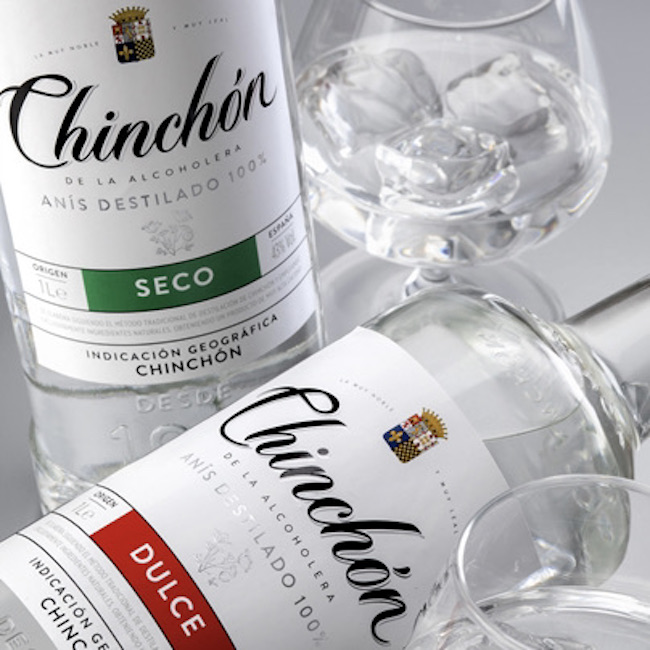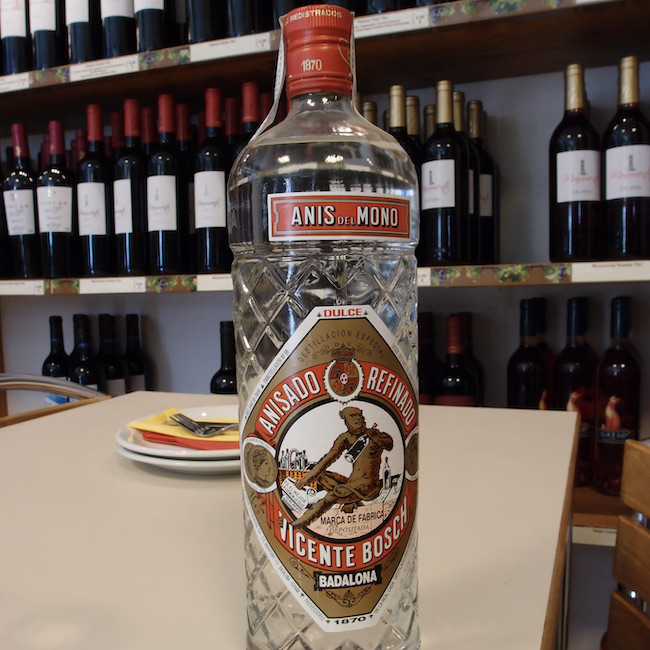by Fiona Dunlop
.png.transform/rendition-xs/image_image%20(1).png)
With a tradition that dates back to the 9th century, this spirit receives much love from barmen and pastry chefs: to know it is to love it

by Fiona Dunlop
They may look innocuous, but those needle-thin, green anise seeds pack an extraordinary punch. Their source is the pimpinella anisum, an umbellifer whose tiny white flowers produce these extra-aromatic seeds. At any anís distillery you will be enveloped in a potent fragrance that is part of their transformation into one of the Mediterranean’s most ubiquitous spirits. Spain has developed an extensive network of artisan distilleries, and exploited this alcohol so imaginatively.
Once again, a classic Spanish product owes its existence to the days of al-Andalus when the process of alembic distillation was brought from Baghdad to Moorish Spain. Anselmo Córdoba, the director of Spain’s only museum dedicated to anís, in Rute, Andalucía, explains: “Like al-cohol, the very word al-embique (alembic) - the copper distilling apparatus - comes from Arabic. They invented it back in the 9th century and a few hundred years later it came here. A boom happened in the 19th century when phylloxera destroyed vast swathes of Spanish grape vines – and anís stepped in. By the 1950s, it was the country’s most popular drink.”

Today it represents about 8% of Spanish alcohol consumption, overtaken by brandy, gin, other herbal liqueurs and imported spirits, yet it is still widely drunk as a post-prandial digestif and even as a breakfast pick-me-up with black coffee. This reflects its reputation for instilling a sense of well-being and also aiding digestion. As Córdoba clarifies, “That is why it started off as a medicine produced in pharmacies.”
¿Dry or sweet?
Two main types exist: seco (dry) and dulce (sweet). The original dry distillation has an alcoholic content of 45° which, when sweetened with syrup, hovers at 35°. Numerous variations depend on how much syrup and / or water are added. In rare cases such as the extra sec of the Mallorcan distillery, Tunél, alcohol content rises to 50° while Chinchón’s seco especial soars to 74%. Not surprisingly, this is the strongest drink produced in Spain.
Chinchón’s notoriety goes back centuries to when it supplied the royal court in Madrid, just 50km to the north. Ever since, the town has lured hordes of visitors to visit the distillery and lunch on the spectacular Plaza Mayor; for many Spaniards, anís is Chinchón. Historic rivals include Cazalla de la Sierra (15th- 16th century), near Seville, once home to 15 distilleries, now only two; Anís del Mono (1870), in Badalona, near Barcelona, with its iconic label of a monkey; and Anís Paloma de Monforte del Cid (1895), in Alicante province, a particularly smooth seco incorporating star anise, consumed as an aperitif with water.

Then there is Rute, a pueblo blanco of the rugged Sierras Subbéticas that is the anís capital of Cőrdoba province. Four distilleries survive (Machaquito, Raza, Altamirano and Duende) as well as the museum run by the grandson of the Duende founder. In this remarkable temple to anís the air is infused with the distinctive fragrance of matalahuva (aniseed) from alembic stills dating back to 1908. Here, too, the evolution is illustrated by dozens of gorgeous vintage bottles with labels of dazzling fantasy: playing-cards, Cőrdoba’s Mezquita, cartoon characters, conquistadors and, inevitably, a roll-call of toreros. With anís production going back to the 1630s, Rute can hold its head high.
How to drink (or eat!) ‘anís’
Usually anís is drunk diluted with water or ice which turns it cloudy, though occasionally seco is mixed with a sweet muscatel wine, typical in Murcia, or seco mixed with dulce. In Malaga’s Ojén, the spirit has been blended with local muscatel and spring water since 1830. Elsewhere you might find it mingling with brandy – inspiring the epithet sol y sombra. Such versatility is a badge of anís honour and personal taste. But at Rute’s cult cocktail bar, El Sitio, you will sit (or drink) up, as here the owner-barman, Antonio Monte, makes whimsical concoctions like a fresa anisado of sweet anise, strawberries and milk; a straightforward mojito of anise, ice and lemon juice; a complex Subbético of anise, quince juice, chopped lemon and mint, and, to crown them all, a cocktail of sweet anise, peach juice, apple juice and olive oil from a local olive press.

Aniseed has long found its way into numerous sweets and cookies, a classic being the traditional Christmas rosco, a deliciously crumbly cookie made from flour, olive oil, sugar, icing sugar, aniseed and anís dulce. Top chefs continue to experiment, as with the bunyols de l’Empordà of Roger Cama, head pastry chef, at Entre Dos Mons, in Palamós, Catalunya. After frying doughnuts which already incorporate anís in their dough, he dips them in the spirit before a final coating of sugar. Another aficionado is Iván Ortiz, chef at the celebrated Asturian restaurant, Casa Gerardo, who makes divine deep fried casadielles (pastry rolls) filled with walnuts, cinnamon, butter, honey and – what else? – anise.
But it is back in the south that we find imaginative use of aniseed in the form of polea, a traditional west Andalucian dessert combining sweetened flour, milk, lemon peel, olive oil, cinnamon, aniseed and anís. The result is like a sweet, liquorice-flavoured béchamel topped with croûtons. Inspired by this some years ago, El Bullí’s Hacienda Benazuza, in the same region, took it one step further by conjuring up its own polea served in a Martini glass. Mixing a roux with deep fried lemon peel and aniseed, the concoction eventually emerged from a syphon as a foam – typical of the Ferran Adrià era. Perhaps the ultimate metamorphosis of this addictive seed?